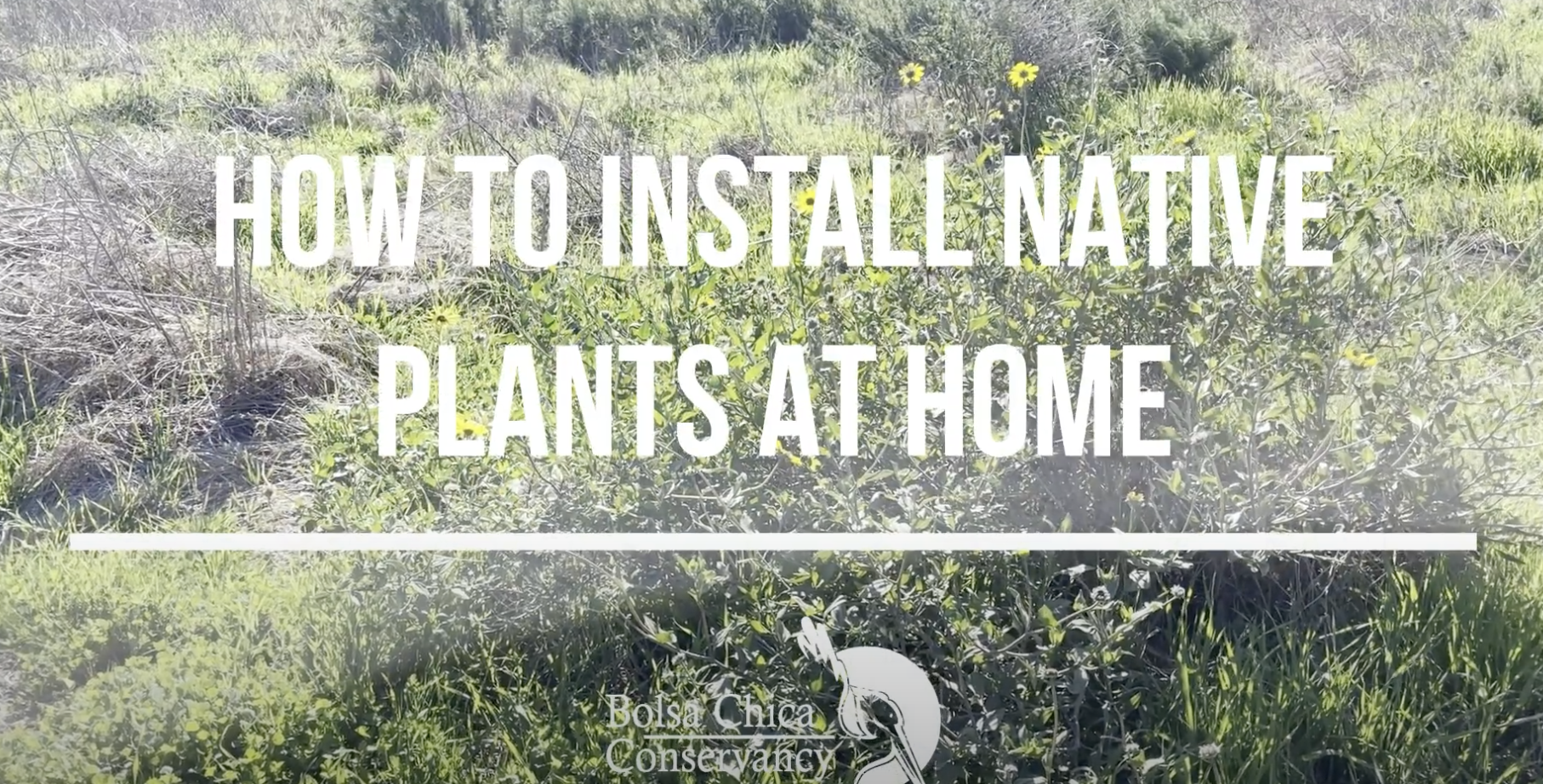Native Plants at Home
Bring the beauty of Bolsa Chica to your home and support local ecosystems at the same time!
Want to purchase some native plants? The Bolsa Chica Conservancy periodically hosts native plant sales, so check back regularly.
Native plants are widely diverse and a great addition to any growing space! In southern California, where residents contend with long, dry summers, and short, unpredictably wet winters, adding native, drought-tolerant plants is a great way to add some color to your home while also saving money!
Installing native plants can have a number of benefits ecologically. By increasing the populations of native plants in an area, you can also help support other native wildlife! Birds like Goldfinches (Passeriformes fringillidae), California gnatcatchers (Passeriformes polioptilidae), and Bushtits (Passeriformes aegithalidae), as well as insects like Monarch butterflies (Danaus plexippus), Western pygmy blue butterflies (Brephidium exilis), and bumblebees – even native mammals – love the nutrition that native plants provide! In the case of rarer species, like the Western pygmy blue and the California gnatcatcher, it can even help expand a species’ range. And, in the light of California’s severe drought, installing plants that are adapted to low-water conditions can help ensure that residents are conserving water through less frequent watering of gardens and lawns.
But – they can also save you money! Since southern California’s native plants are drought-tolerant, they can survive with little water during drier years or seasons, and will not need to be replaced as often as some annual flowering plants (or even at all!). In addition to longer life spans, native plants can also earn you rebates! Depending on where you live, your local water district may provide rebates on your water bill for removal of turf and installation of native, climate appropriate plants. The Municipal Water District of Orange County (MWDOC) even provides landscaping assistance programs for beginners in the native plant world!


Tips for installing native plants:
- Install plants during cooler, fall weather. Planting in warm weather can promote the growth of harmful fungal pathogens, and requires higher overall water demand for the plant.
- Deep (water reaches further into the soil) and infrequent waterings are more effective than frequent, shallow waterings, especially if the plant is installed directly into the ground. We recommend watering for 15-30 minutes 1 to 2 times a week, depending on the moisture of the soil!
- During the first year, make sure the plant is adequately watered. Yes, they are drought tolerant, but they’re still growing! The roots need to be happy to ensure the plants survive past their first growing season.
- As with most gardening, try to keep plant-eating insects away from the plants for their first growing year. It can stress the plant out, and reduce the chance of the plant surviving past it’s first growing season. Neem oil and diatomaceous earth are great pest-prevention solutions that are also natural that will control most pests you’ll find on the plants!
- It’s completely normal for plants to “sulk,” or droop a little bit after planting! They’re just a little stressed out from the transplant, and will bounce back after they become more comfortable in their new home.

